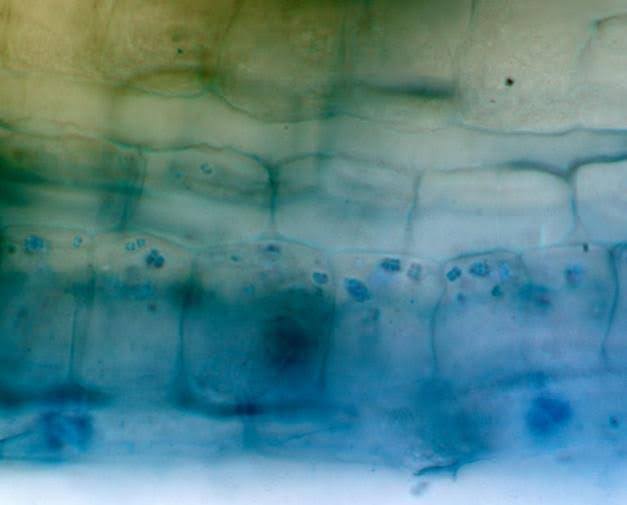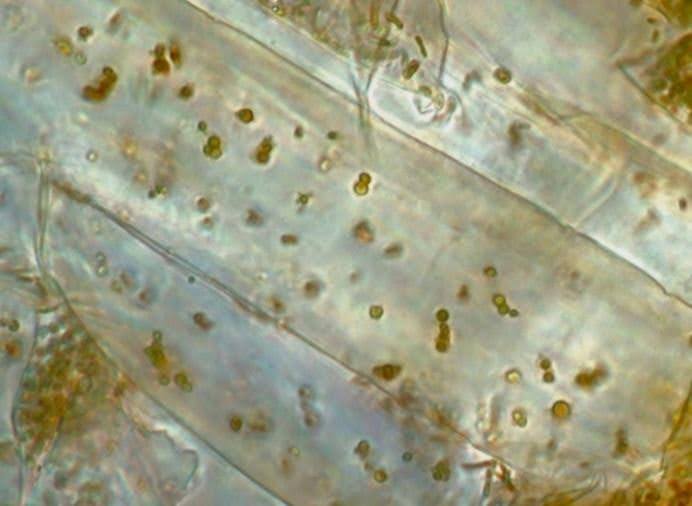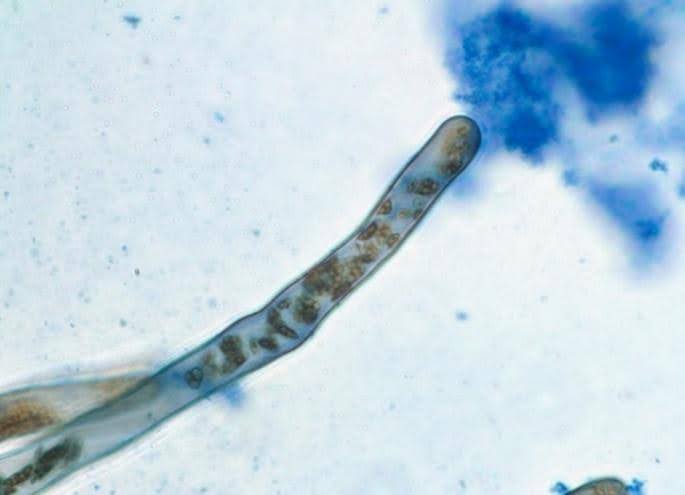We all know that plants need nutrients in order to grow. We can divide the ways that plants absorb mineral nutrients into two broadly different categories; biotic and abiotic. The abiotic relies exclusively on physical and chemical processes and is dependent on the nutrients being in a soluble form coming into contact with the plant roots. The biotic mechanism relies on wide and diverse soil microbial communities that locate, solubilize, and transport the mineral nutrients prior to the absorption process. This process is termed nutrient cycling and is an important soil function. Everywhere that plants grow, nature provides an overwhelming sufficiency of all the mineral nutrients required for healthy growth and both the abiotic and biotic nutrient supply systems must be in place for plants to function properly.
As modern-day agriculture advanced, the emphasis on higher and higher crop yields created a situation where more fertilizers were applied with a reliance on the abiotic nutrient pathway. This system has become an enormous component of agricultural science where the chemical analyses from the different extractants are calibrated into providing reasonably accurate fertilizer recommendations to obtain specific crop yields. The result of this focus are degraded soils with depleted microbial life. The biotic life of the soil not only aids nutrient cycling, but also is critical for water use efficiency and maintaining stable soil aggregate structures which regulates infiltration and water holding ability. The main objective of regenerative agriculture is the re-establishment of this sensitive relationship and balance.
Nature has at its disposal both unavailable mineral nutrients in the soil as well as atmospheric minerals in the gas form. How does nature put its growth model together utilizing the mineral nutrients from these unavailable forms? With life—microbial life! It is important to understand that all living species have an interdependence with microbial life, so much so that it is calculated that a human being contains about 100 trillion cells of which 90 trillion are microbial living in mutual association with the human cells. This mutual interdependence also forms the basis for the maintenance of plants, animal, and human health.
Nature’s Biotic Nutrient Supply Process
Plants need many nutrients in order to survive and to thrive. Photosynthesis drives this process through the absorption of CO2 using sunlight energy capture to provide the carbon and part of the oxygen needs of a plant. The water absorption through roots takes care of the hydrogen and the other part of the oxygen incorporation into plants. Nitrogen is the most difficult element to understand because it primarily comes from the tiny fraction of CO2 in the atmosphere as a gas which needs to transform into a solid form for plant roots to absorb. In the biotic model, atmospheric nitrogen is captured by soil microorganisms and made available to plants. Nitrogen gas is fixed through a reductive biochemical process into ammonia in the presence of the enzyme nitrogenase facilitated by a specialized group of bacteria known as diazotrophs. This process can be facilitated through legume associated rhizobium bacteria or through free living nitrogen fixing bacteria that live in association with grasses or other plant species. The next step is the binding of the ammonia with organic acids to form amino acids which are the building blocks of proteins.
The demand for required nutrients within a plant is regulated through signaling systems between plant, bacteria, and fungi in this closely connected and linked system. Signals from the plant requiring a certain quantity of nitrogen are sent via root exudate sugars through the roots to the nitrogen fixing bacteria. The microbes feed on these exudates and their numbers multiply into a quorum for providing the nitrogen fixing service needed.
Nature also provides the other soil minerals such as phosphorus, potassium, calcium, magnesium, iron and others. These important nutrients are locked up in our soils and can be liberated and made available through a fungal group known as mycorrhizae.

The picture above describes the mycorrhizosphere and how mycorrhizae hyphae can extend the root surface area. The hyphae of the mycorrhizae serve as root extensions adding miles of additional root transportation networks to the host plant. It is also a fraction of the thickness of a root hair and can penetrate hair line cracks to obtain nutrients and water for the host plant where roots are unable to penetrate. Even at the wilting point of a plant, there is still water within these micropores, and while plant roots cannot access the water, the mycorrhizae hyphae can still extract water for the host plant.
The fungal hyphae extend many meters beyond the host plants root systems attaching to many mineral sites where plant required nutrients are in abundance, but not in plant available forms. When the host plant requires a nutrient, a request is chemically signaled and the fungal hyphae and helper bacteria solubilize the required nutrient and transport the required quantity back to the host plant. Fungal hyphae excrete a very strong oxalic acid that allows the hyphae to “drill” their way through solid granite capturing elemental nutrients along the way.
During the process of hyphae extension an extremely concentrated organic carbon substance, known as glomalin is produced. Glomalin is an extremely stable, glue type glycoprotein molecule that binds soil particles together and greatly improves soil aggregate stability. The mycorrhizal mutualistic association therefore not only provides nutrients to the host plants but also maintains other soil functions such as infiltration and water holding capacity through aggregation of soil particles.
Connectivity Between Plant and the Soil Mineral Components
The connectivity between plants and minerals through mycorrhizae is one of nature’s most important tools. These connections also convey inter-plant messages between plant and roots and also serve as the conduit for mineral supplies through the hyphae to the roots in an orderly fashion. The hyphal strands connect plants within a community of the same and different species with each other creating an inter-plant communication system so that an attack on one plant is signaled throughout the connected community and preemptive natural defense mechanisms are triggered in anticipation of attacks.
The importance of this Mycorrhizae-aided nutrient supply system and its connectivity to the soil minerals cannot be over emphasized as it presents a system that naturally selects for the required nutrient as well as for the sufficiency thereof.
Mycorrhizal Connectivity Effect on Plants, Animals, and Human Health
In agricultural systems that depend on conventional abiotic chemical-driven practices, mycorrhizal connectivity is largely missing. In this absence, plant roots are dependent on nutrients in the soluble form in soil solution with a very limited root surface area contact. The signaling system is largely impaired and roots can only absorb minerals within the vicinity of a root and are usually minerals from applied fertilizers. The very important but non-familiar micro and nano nutrients that are usually present in extremely low concentrations in soils but required for healthy individuals are therefore not readily available and thus not absorbed and become deficient within the food supply chain. A very alarming issue is that most new varieties of corn, wheat, soybean and other commercially grown crops are selected in breeding programs designed to accommodate the nutrient deficiencies in poor soils. Released cultivars are often selected for yield under high fertilizer regimes with narrower micro and nano nutrient requirements. The crops resulting from such breeding programs are therefore less nutrient-dense with more carbohydrate bulk and are providing nutritionally empty calories.
Rhizophagy is another natural microbial aided nutrient supply system very recently described in detail by Dr James White from Rutgers University. In the rhizophagy cycle, microbes alternate between a root intracellular endophytic phase and a free-living soil phase outside the root. Microbes acquire soil nutrients in the free-living soil phase within the rhizosphere and then enter root tip meristem cells as complete bacteria cells. Nutrients from these bacteria cells are then extracted through exposure to host-produced reactive oxygen that degrades the bacterial cell walls and releases nutrients directly to the plant roots. Dr. White found that the symbiotic microbes grow in the root exudate zone very near the root tips and are actually cultivated or farmed by the plant. Surviving bacteria in root epidermal cells trigger root hair elongation and as hairs elongate bacteria exit at the hair tips, reforming their cell walls and cell shapes as these microbes emerge into the rhizosphere where they may obtain additional nutrients and the cycle is repeated. The rhizophagy cycle has been found to positively impact N, P, K as well as most macro- and micro-nutrients.

Root of Bermuda grass (Cynodon dactylon) with clouds of bacteria around the root tip exudate zone where microbes are entering into root cells.

Root tip root epidermal cells of curly dock (Rumex crispus) showing tetrads of the bacterium Micrococcus luteus within cells.

Root epidermal cells of common reed grass (Phragmites australis) showing bacterial protoplasts replicating and degrading within the cell.

Root hair of a Fescue grass showing bacteria within the hair (brown due to hydrogen peroxide around bacteria) and bacteria ejected from the tip in mass (blue staining).
Biotic processes such as described above allow plants to form symbiotic associations with soil microbes and should be embraced in all crop production practices. The better biotic farmers that we can be, the less money has to be spent to facilitate the abiotic processes that dominate industrial agriculture.
This article first appeared in the 10th Edition of Green Cover's Soil Health Resource Guide.
Also check out the 11th edition, our latest Soil Health Resource Guide, over 90 pages packed with scientific articles and fascinating stories from soil health experts, researchers, farmers, innovators, and more! All as our complimentary gift to you, a fellow soil health enthusiast!
